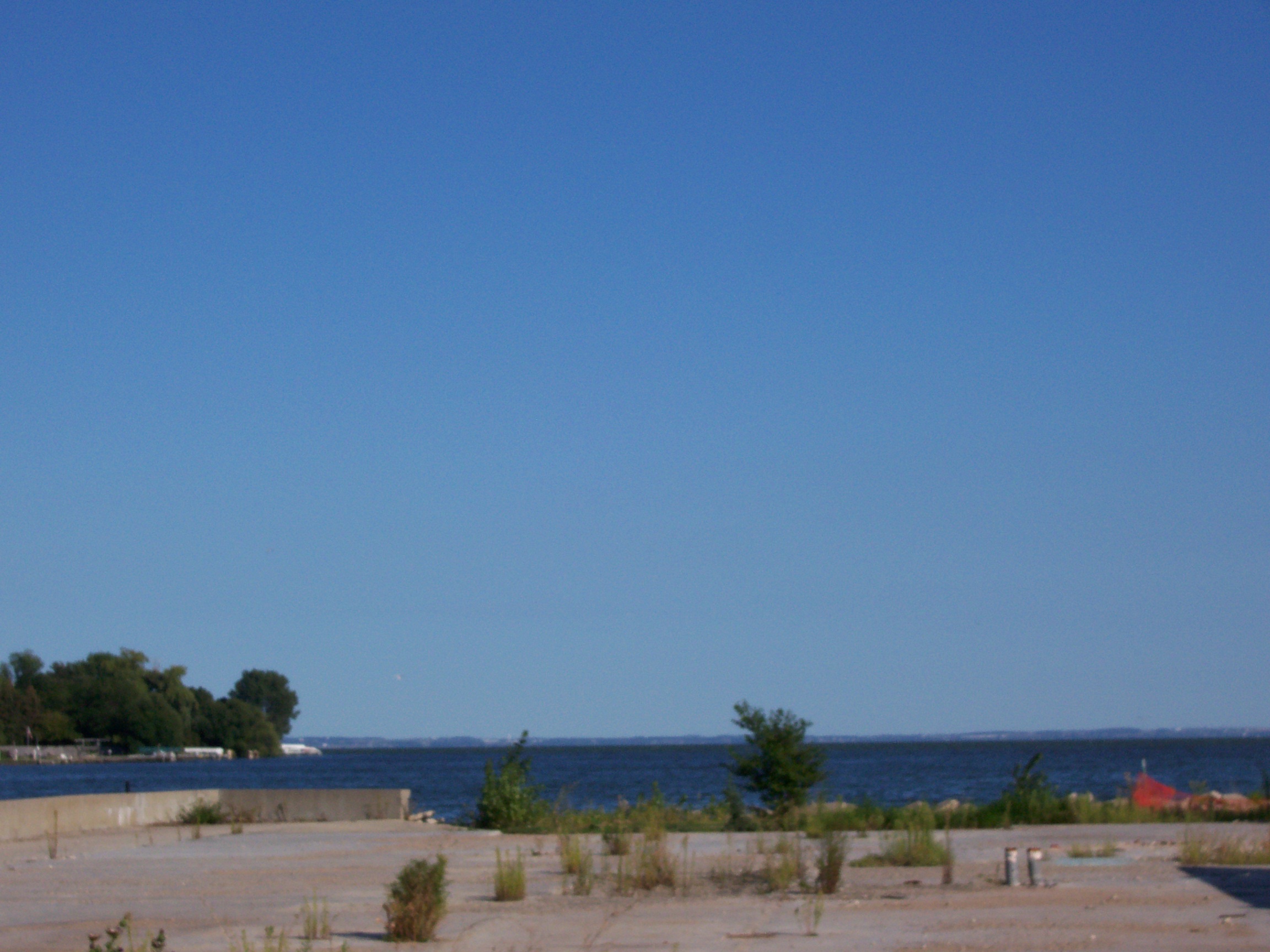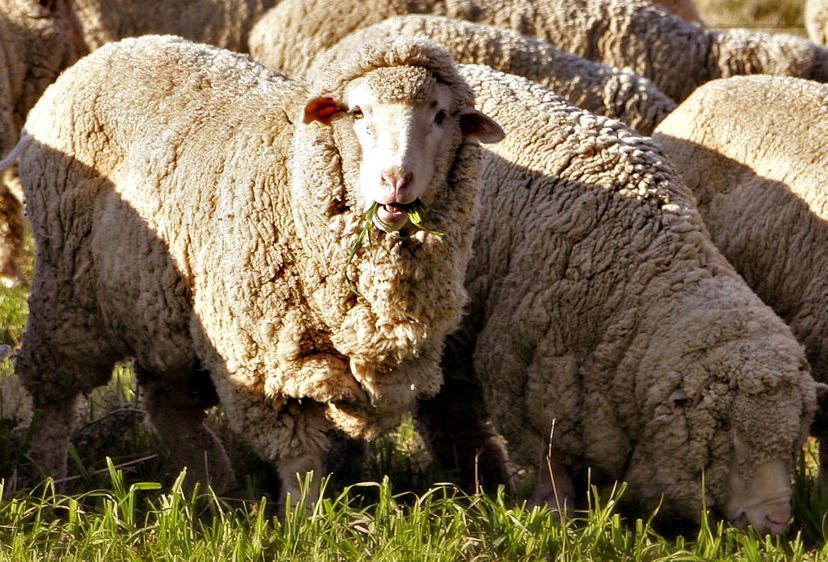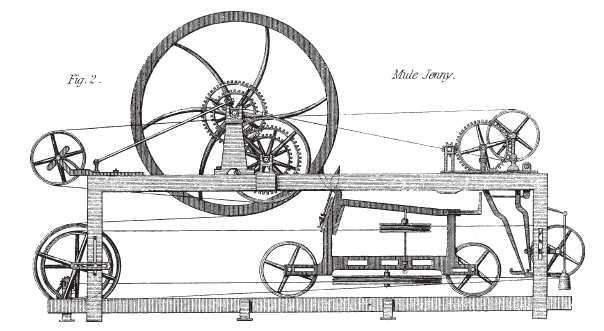|
Winooski Falls Mill District
The Winooski Falls Mill District is located along the Winooski River in the cities of Winooski and Burlington, Vermont, in the United States of America. It encompasses a major industrial area that developed around two sets of falls on the river in the 19th century. Location The Winooski River flows from the southeast into Burlington Bay, Lake Champlain. The city of Burlington in Chittenden County, Vermont is on the south bank and Winooski and Colchester on the north. It is from the Canada–US border. There are two sets of falls on the river; the settlement of Winooski is placed between the falls. The historic district refers to the mills built on both banks at the lower falls. The designated district stretches on the northern bank of the river to Center and Canal Streets, including 110 West Canal Street, and on the southern bank including Burlington addresses 485 to 497 Colchester Avenue, 5 to 21 Mill Street and 10 to 32 (even numbers only) Barrett Street. with The Bur ... [...More Info...] [...Related Items...] OR: [Wikipedia] [Google] [Baidu] |
Winooski River
The Winooski River (formerly the Onion River) is a tributary of Lake Champlain, approximately long, in the northern half of Vermont. Although not Vermont's longest river, it is one of the state's most significant, forming a major valley way from Lake Champlain through the Green Mountains towards (although not connecting in drainage to) the Connecticut River valley. The river drains an area of the northern Green Mountains between Vermont's capital of Montpelier and its largest city, Burlington. It rises in the town of Cabot in Washington County, and then flows southwest to Montpelier, passing through the city along the south side of downtown and the Vermont State House. From Montpelier it flows northwest into Chittenden County through Richmond, passing north of the city of Burlington. It enters the eastern side of Lake Champlain approximately northwest of downtown Burlington. The city of Winooski sits along the river approximately upstream from its mouth, on the northeas ... [...More Info...] [...Related Items...] OR: [Wikipedia] [Google] [Baidu] |
Oshkosh, Wisconsin
Oshkosh is a city in Winnebago County, Wisconsin, of which it is the county seat. The city had a population of 66,816 in 2020, making it the ninth-largest city in Wisconsin. It is also adjacent to the Town of Oshkosh. History Oshkosh was named for Menominee Chief Oshkosh, whose name meant "claw" (cf. Ojibwe ''oshkanzh'', "the claw"). Although the fur trade attracted the first European settlers to the area as early as 1818, it never became a major player in the fur trade. The 1820s mining boom in southwest Wisconsin along with the opening of the Erie Canal shifted commercial activity away from the Fox River Valley and Green Bay. Soon after 1830, much of the trade moved west, as there had been over-trapping in the region. Following the publicity caused by the Black Hawk War in 1832, there was increased interest in settling Wisconsin by whites from the East Coast, especially New York, Indiana, and Virginia, and by 1836 the cities of Milwaukee, Madison, Janesville, Beloi ... [...More Info...] [...Related Items...] OR: [Wikipedia] [Google] [Baidu] |
Combing
Combing is a method for preparing carded fibre for spinning. Combing is divided into linear and circular combing. The Noble comb is an example of circular combing. The French comb is an example of linear combing. The process of combing is accompanied by ''gilling'', a process of evening out carded or combed top making it suitable for spinning. Combing separates out short fibres by means of a rotating ring or rectilinear row of steel pins. The fibres in the 'top' it produces have been straightened and lie parallel to each other. When combing wool, the discarded short fibres are called noils, and are ground up into shoddy. In general, there are two main systems of preparing fibre for yarn: the worsted system and the woollen system. The worsted system is defined by the removal of short fibres by combing and top preparation by gilling. In the woollen system, short fibres are retained, and it may or may not involve combing. Description The circular combs used have long metal tee ... [...More Info...] [...Related Items...] OR: [Wikipedia] [Google] [Baidu] |
Worsted
Worsted ( or ) is a high-quality type of wool yarn, the fabric made from this yarn, and a yarn weight category. The name derives from Worstead, a village in the English county of Norfolk. That village, together with North Walsham and Aylsham, formed a manufacturing centre for yarn and cloth in the 12th century, when pasture enclosure and liming rendered the East Anglian soil too rich for the older agrarian sheep breeds. In the same period, many weavers from the County of Flanders moved to Norfolk. "Worsted" yarns/fabrics are distinct from woollens (though both are made from sheep's wool): the former is considered stronger, finer, smoother, and harder than the latter. Worsted was made from the long-staple pasture wool from sheep breeds such as Teeswaters, Old Leicester Longwool and Romney Marsh. Pasture wool was not carded; instead it was washed, gilled and combed (using heated long-tooth metal combs), oiled and finally spun. When woven, worsteds were scoured but not fulled. ... [...More Info...] [...Related Items...] OR: [Wikipedia] [Google] [Baidu] |
Merino
The Merino is a breed or group of breeds of domestic sheep, characterised by very fine soft wool. It was established in Spain near the end of the Middle Ages, and was for several centuries kept as a strict Spanish monopoly; exports of the breed were not allowed, and those who tried risked the death penalty. During the eighteenth century, flocks were sent to the courts of a number of European countries, including France (where they developed into the Rambouillet), Hungary, the Netherlands, Prussia, Saxony, Estonia, Livonia and Sweden. The Merino subsequently spread to many parts of the world, including South Africa, Australia, and New Zealand. Numerous recognised breeds, strains and variants have developed from the original type; these include, among others, the American Merino and Delaine Merino in the Americas, the Australian Merino, Booroola Merino and Peppin Merino in Oceania, the Gentile di Puglia, Merinolandschaf and Rambouillet in Europe. The Australian Poll Merino is a ... [...More Info...] [...Related Items...] OR: [Wikipedia] [Google] [Baidu] |
Chace Mills
Chace Mills is a historic textile mill complex on Lewiston and Salem Streets in Fall River, Massachusetts. Built in 1872, it is one of the city's most visible historic mills, with a particularly fine Italianate stair tower. The complex was added to the National Register of Historic Places in 1983. Description and history Chace Mills is set on the south side of the Quequechan River, on the northeast side of Lewiston Street at its junction with Salem Street. The 5-1/2 story stone building is prominently visible from Interstate 195. It is built out of local granite and measures . Its most prominent and distinctive feature is the central stair tower, which rises to an open belfry with rounded-arch openings in Palladian arrangement. The tower is topped by a low-pitch hip roof with broad eaves decorated with paired brackets and dentil moulding. The mill was organized in 1872 and built for the manufacture of cotton cloth with a capacity of 43,480 spindles. Augustus Chace served as ... [...More Info...] [...Related Items...] OR: [Wikipedia] [Google] [Baidu] |
Worsted
Worsted ( or ) is a high-quality type of wool yarn, the fabric made from this yarn, and a yarn weight category. The name derives from Worstead, a village in the English county of Norfolk. That village, together with North Walsham and Aylsham, formed a manufacturing centre for yarn and cloth in the 12th century, when pasture enclosure and liming rendered the East Anglian soil too rich for the older agrarian sheep breeds. In the same period, many weavers from the County of Flanders moved to Norfolk. "Worsted" yarns/fabrics are distinct from woollens (though both are made from sheep's wool): the former is considered stronger, finer, smoother, and harder than the latter. Worsted was made from the long-staple pasture wool from sheep breeds such as Teeswaters, Old Leicester Longwool and Romney Marsh. Pasture wool was not carded; instead it was washed, gilled and combed (using heated long-tooth metal combs), oiled and finally spun. When woven, worsteds were scoured but not fulled. ... [...More Info...] [...Related Items...] OR: [Wikipedia] [Google] [Baidu] |
Frieze (textile)
In the history of textiles, frieze (French: ''frisé'') is a Middle English term for a coarse woollen, plain weave Plain weave (also called tabby weave, linen weave or taffeta weave) is the most basic of three fundamental types of textile weaving, weaves (along with satin weave and twill). It is strong and hard-wearing, and is used for fashion and furnishin ... cloth with a nap (textile), nap on one side. The nap was raised by scrubbing it to raise curls of fibre, and was not shorn after being raised, leaving an uneven surface. The term frieze can also be used for the curly nap frieze fabrics have, as well as the action of raising the nap, which differs from standard methods. Today, ''frieze'' is also a term applied to a textile technique used in modern machine-loomed carpeting, as well as the textile produced. Carpets made with this technique are known for their resilience, due to a high Twist per inch, twist rate, outperforming standard cut or loop pile carpets. History ... [...More Info...] [...Related Items...] OR: [Wikipedia] [Google] [Baidu] |
Kersey (cloth)
Kersey is a kind of coarse woollen textile, cloth that was an important component of the textile trade in Medieval England. History It derives its name from kersey yarn and ultimately from the village of Kersey, Suffolk, having presumably originated in that region. However the cloth was made in many places. It was being woven as early as 1262 in Andover, Hampshire, where regulations prohibited the inclusion of Spanish wool in kerseys. By 1475, the West Riding of Yorkshire including Calderdale was also a major producer, while Devon and Somerset were major producers and exporters until the manufacture later moved to serge (fabric), serge making. Kersey was a lighter weight cloth than broadcloth. English kerseys were widely exported to central Europe and other places: a surviving business letterLetter dated June 26th, 1578, from John Withal in Santos (São Paulo), Santos, Brazil, to Mr Richard Staper, excerpted in Richard Hakluyt (ed. Jack Beeching), ''Voyages and Discoveries'', (Pengu ... [...More Info...] [...Related Items...] OR: [Wikipedia] [Google] [Baidu] |
Ring Spinning
Ring spinning is a spindle-based method of spinning fibres, such as cotton, flax or wool, to make a yarn. The ring frame developed from the throstle frame, which in its turn was a descendant of Arkwright's water frame. Ring spinning is a continuous process, unlike mule spinning which uses an intermittent action. In ring spinning, the roving is first attenuated by using drawing rollers, then spun and wound around a rotating spindle which in its turn is contained within an independently rotating ring flyer. Traditionally ring frames could only be used for the coarser counts, but they could be attended by semi-skilled labour. History Early machines * The Saxony wheel was a double band treadle spinning wheel. The spindle rotated faster than the traveller in a ratio of 8:6, drawing was done by the spinners fingers. *The water frame was developed and patented by Arkwright in the 1770s. The roving was attenuated (stretched) by draughting rollers and twisted by winding it onto a spind ... [...More Info...] [...Related Items...] OR: [Wikipedia] [Google] [Baidu] |
Mule Spinning
The spinning mule is a machine used to spin cotton and other fibres. They were used extensively from the late 18th to the early 20th century in the mills of Lancashire and elsewhere. Mules were worked in pairs by a minder, with the help of two boys: the little piecer and the big or side piecer. The carriage carried up to 1,320 spindles and could be long, and would move forward and back a distance of four times a minute. It was invented between 1775 and 1779 by Samuel Crompton. The self-acting (automatic) mule was patented by Richard Roberts in 1825. At its peak there were 50,000,000 mule spindles in Lancashire alone. Modern versions are still in niche production and are used to spin woollen yarns from noble fibres such as cashmere, ultra-fine merino and alpaca for the knitware market. The spinning mule spins textile fibres into yarn by an intermittent process. In the draw stroke, the roving is pulled through rollers and twisted; on the return it is wrapped onto the spindle ... [...More Info...] [...Related Items...] OR: [Wikipedia] [Google] [Baidu] |
French Canadian
French Canadians (referred to as Canadiens mainly before the twentieth century; french: Canadiens français, ; feminine form: , ), or Franco-Canadians (french: Franco-Canadiens), refers to either an ethnic group who trace their ancestry to French colonists who settled in Canada beginning in the 17th century or to French-speaking or Francophone Canadians of any ethnic origin. During the 17th century, French settlers originating mainly from the west and north of France settled Canada. It is from them that the French Canadian ethnicity was born. During the 17th to 18th centuries, French Canadians expanded across North America and colonized various regions, cities, and towns. As a result people of French Canadian descent can be found across North America. Between 1840 and 1930, many French Canadians immigrated to New England, an event known as the Grande Hémorragie. Etymology French Canadians get their name from ''Canada'', the most developed and densely populated region of Ne ... [...More Info...] [...Related Items...] OR: [Wikipedia] [Google] [Baidu] |








